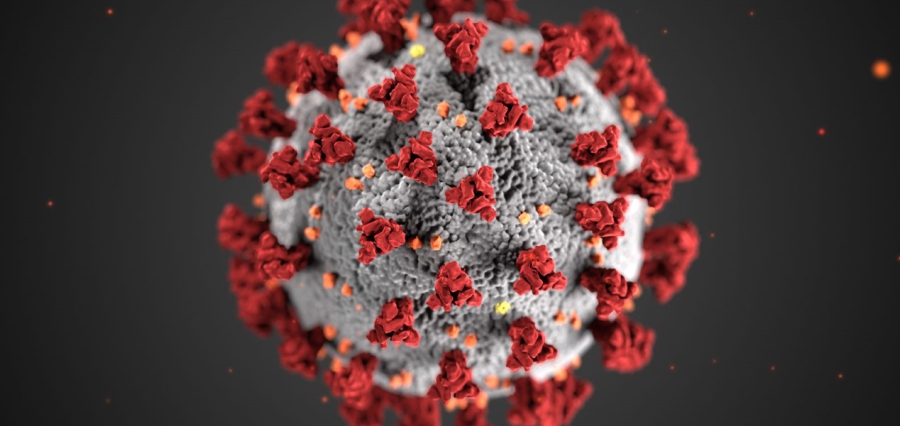[ad_1]
Humans are touchy species. After all, it is one sense that we all use to interact with the world. Whether we are touching someone else, our face, or some object—we are never not touching something or the other— and that is what became our downfall. The spread of COVID was not only through contact with each other but also via the use of common spaces.
We can limit our contact with each other by wearing masks and adhering to the six-feet rule, but how do we determine the necessary use of shared spaces? Sanitizing the surface after each use is hard to remember every time, as is sanitizing our hands. Something had to be done. So, architects and technologists began to look at the spaces we occupy and began to think.
Modern Architecture and Epidemics
Much of the modernist aesthetics of today’s architecture are a direct result of the Tuberculosis epidemic in the 19th century. Widespread use of antibiotics to treat this disease did not start until the 1950s, and during its peak, it was the US’s third most common cause of death. Before antibiotics came into the picture, the prescribed cure for this ‘white plague’ was lots of fresh air, sunlight, rest, and nourishing food– all of them a scarcity in overcrowded and sanitation-lacking cities like New York.
In the mid-19th century, a movement began in Europe to design sanatoriums that limit the spread of this disease. A key feature of these sanatoriums was a glass-enclosed deck called the ‘cure porch.’ Much of the aesthetics of modern architecture have adopted the elements of these sanatoriums. Flat roofs, terraces, balconies, and white or light colour-painted rooms with beneficial views of nature are all elements influenced by the sanatorium design.
Contactless Technology and Coronavirus
The arrival of coronavirus and its six-feet rule is again changing the rules of modern architecture. With the urgency of minimizing the spread of germs through touch paramount, the adoption of contactless technology has gone into overdrive. In airports, restaurants, hospitals, hotels, offices, and everywhere you can see the integration of hands-free technology at all levels.
Before the pandemic, the adoption of touchless payment technology was plateauing, but after the pandemic, it has become the preferred mode of payment. Airports, especially, have integrated sensors everywhere, from the ticket kiosk to bathrooms, to make travel frictionless and contactless for travelers. Offices have also implemented systems such as contactless elevators, face recognition attendance, and other sensor-controlled systems to limit surfaces that people need to touch.
A Hands-Free Dream
One of the best things about Tony Stark’s home, the character from the Marvel movies, is how his AI Jarvis controls every aspect of it. You can see the character extensively using voice command and hand gesture technology throughout the movies to navigate around his house. He never has to shout, either. While his Ironman suit may still be a scientific impossibility, his house, however, is not.
Pandemic has sped up the process of innovation in the hands-free technology arena. Headsets that respond to gestures, faucets that are voice-activated, intelligent toilets that flush themselves, locks, thermostats, light switches, leak detection sensors– everything is becoming hands-free.
This is the next stage of the evolution of the Internet of Things (IoT), the internet of eyes and ears (IoEE). It combines visual, gesture, and voice technology with devices and uses consumers’ biometrics to control their activation. IoEE aims to create a more intuitive device experience for users requiring less touching or shouting across the room from them.
The arrival of the pandemic also brought forth the need to monitor spaces to track if people are maintaining distance from each other and how they interact with the objects within it. This data can be evaluated to quantify the regularity of cleaning required and whether stricter gathering policies are needed.
It can also be used to understand the variety of ways consumers are utilizing a particular space and at what frequency. Along with IoT technology, analytics can be used to completely digitize physical infrastructures so they can be monitored remotely in real-time.
Towards the Next Chapter
Epidemics and technologies alter how we interact with an environment. Before, we never thought twice before opening a door. Now we have become viscerally aware of how many germs are on its handle. We have already been hankering after a wireless world, but the pandemic has brought forward the need for a contactless one too. This has obviously led to more innovation in the hands-free technology sector as companies come up with solutions to reduce common points of contact, limiting the spread of germs or viruses like COVID-19.
Places like our houses, offices, our favorite cafe; using things like the ATM, the vending machine, or a switch— none of these things are meant to harm us or kill us, but if innocuous and safe places like these become dangerous, then perhaps it is the time to rethink our environment. Hands-free technology has become the future of health, hygiene, and modern architectural design.
[ad_2]
Image and article originally from www.insightssuccess.com. Read the original article here.

